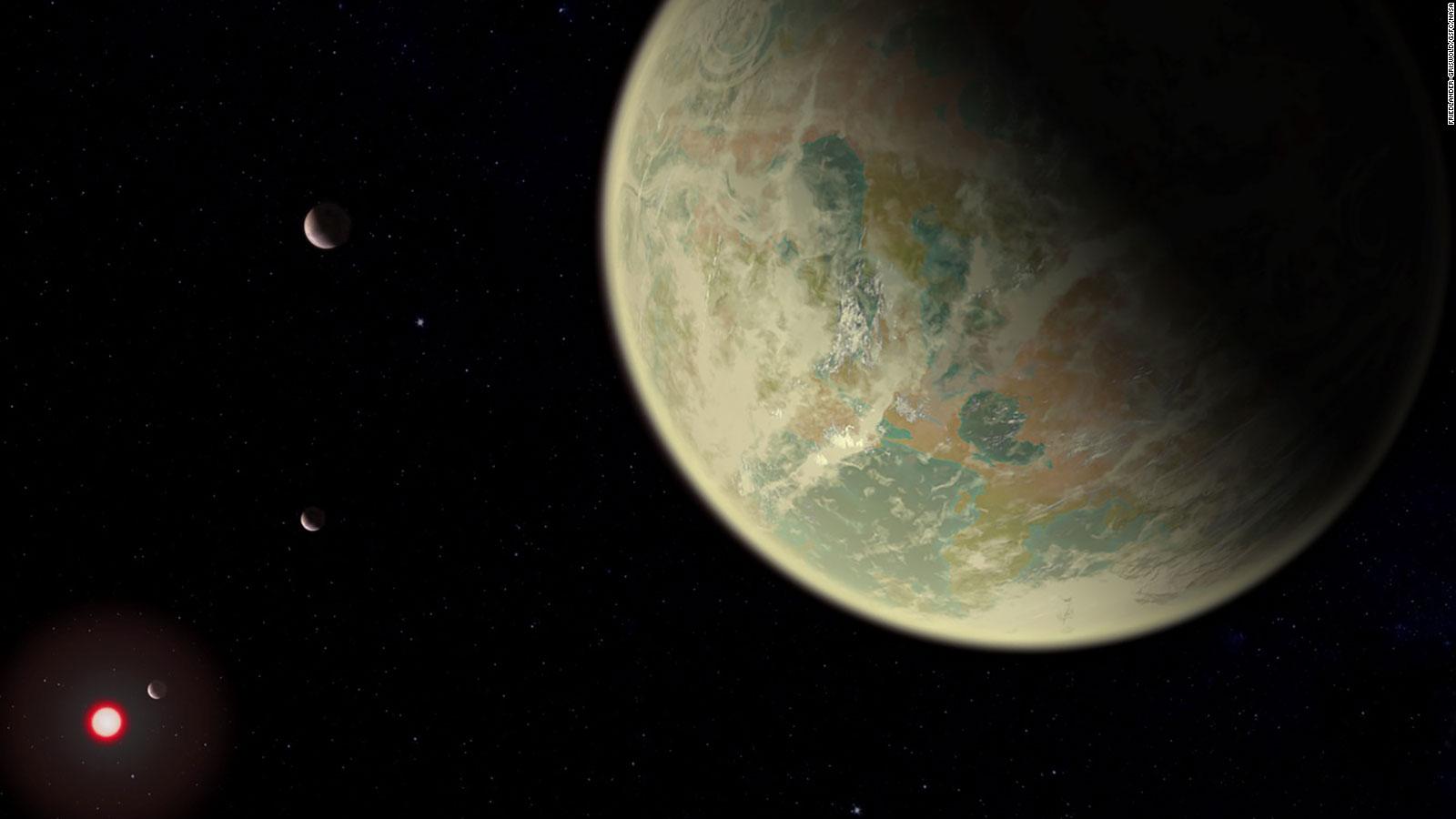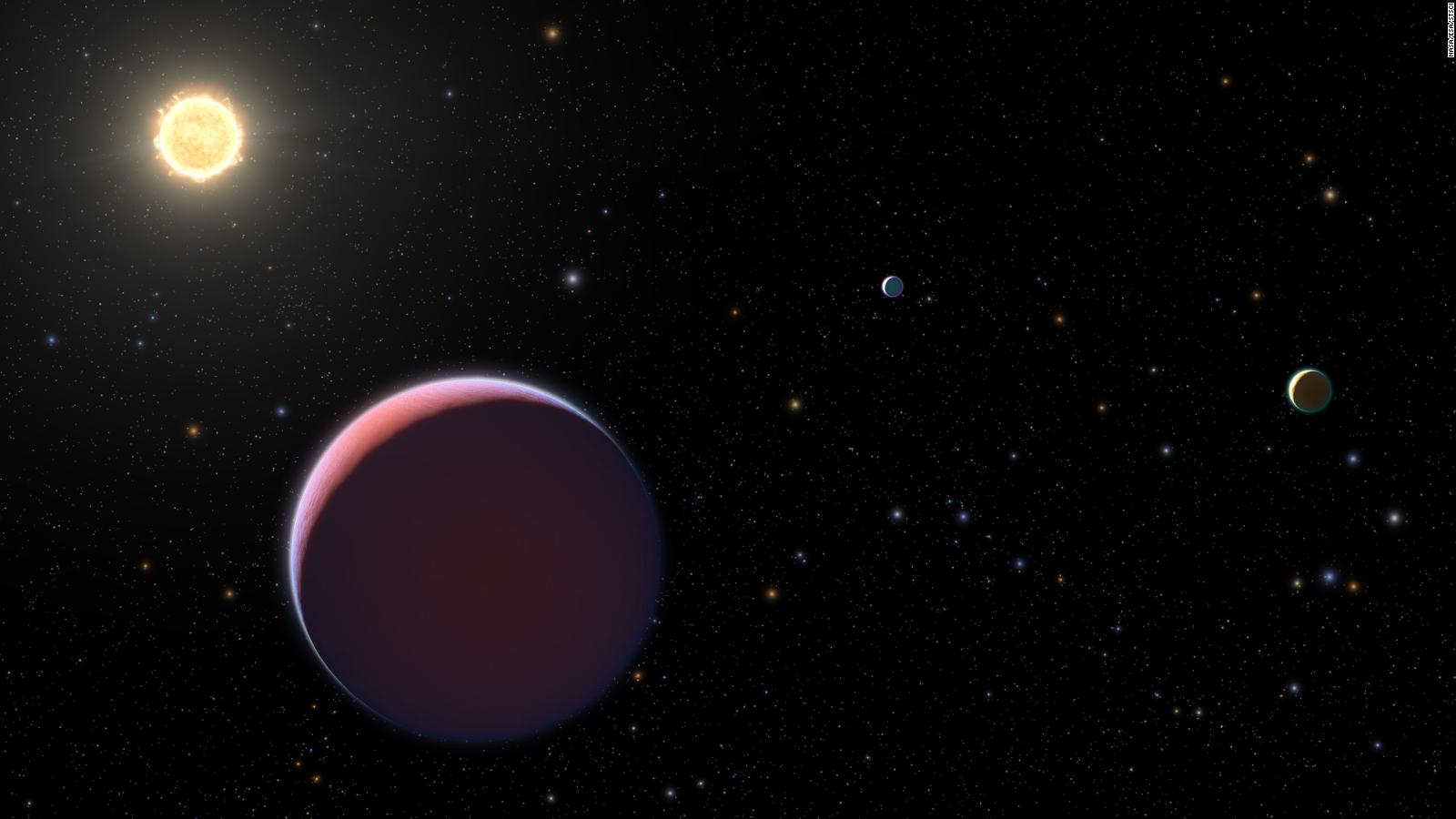The findings were announced during the 235th meeting of the American Astronomical Society on Monday in Honolulu.
The planet is part of a multi-planet system around TOI 700, a small, cool M-dwarf star in the Dorado constellation. It's only about 40% of our sun's mass and size, with half of the surface temperature.
The planet is known as TOI 700 d, one of three orbiting the star. It's at just the right distance to support liquid water on the surface in the star's habitable zone.
Astronomers confirmed their discovery using NASA's Spitzer Space Telescope infrared capabilities with follow-up observations. They also modeled the planet's potential environment to further investigate its habitability.
The find is exciting to astronomers because it's one of a select few potentially habitable planets discovered outside of our solar system that happens to be the size of Earth.
TOI 700 d is the outermost of the three planets, completing a single orbit around the star every 37 Earth days. From its smaller star, the planet receives about 86% of the energy that our sun supplies the Earth. The planet is thought to be tidally locked, meaning one side is always in daylight.
The other two planets in the system, TOI 700 b and c, are different. The innermost planet, b, is the size of Earth and rocky like our planet and zips around the star every 10 Earth days. The second planet, c, is considered to be gaseous and between the size of Earth and Neptune, completing an orbit every 16 Earth days.
"TESS was designed and launched specifically to find Earth-sized planets orbiting nearby stars," said Paul Hertz, astrophysics division director at NASA Headquarters in Washington. "Planets around nearby stars are easiest to follow-up with larger telescopes in space and on Earth. Discovering TOI 700 d is a key science finding for TESS. Confirming the planet's size and habitable zone status with Spitzer is another win for Spitzer as it approaches the end of science operations this January."
Initially, the star was miscategorized as much hotter, leading astronomers to think that the planets orbiting it would be too close and hot to support life.
But researchers, including high school student Alton Spencer working with the TESS team, pointed out the error.
"When we corrected the star's parameters, the sizes of its planets dropped, and we realized the outermost one was about the size of Earth and in the habitable zone," said Emily Gilbert, a graduate student at the University of Chicago. "Additionally, in 11 months of data we saw no flares from the star, which improves the chances TOI 700 d is habitable and makes it easier to model its atmospheric and surface conditions."
In the future, missions like NASA's James Webb Space Telescope, launching in 2021, could determine if the planets have atmospheres and their compositions.
Environment simulations created by researchers using TESS' data revealed a planet that may behave very differently from our own. Because it's tidally locked, the way clouds form and wind blows may be alien to us.
"Someday, when we have real spectra from TOI 700 d, we can backtrack, match them to the closest simulated spectrum, and then match that to a model," said Gabrielle Engelmann-Suissa, a Universities Space Research Association visiting research assistant at NASA's Goddard Space Flight Center. "It's exciting because no matter what we find out about the planet, it's going to look completely different from what we have here on Earth."
TESS' Tatooine discovery
Another first for TESS is its discovery of a planet orbiting two suns, like Tatooine in the Star Wars films.
The planet TOI 1338 b was found 1,300 light-years away in the Pictor constellation. It's the only planet in the system with two stars. It's between the sizes of Neptune and Saturn and experiences regular eclipses from its stars.
The stars whirl around each other in orbit every 15 days, with one 10% more massive than our sun and the other is more diminuitive and cooler.
And the planet was found by a high school student.
Scarsdale High School student Wolf Cukier was interning for NASA's Goddard Space Flight Center over the summer when he spotted something in TESS' star data.
"I was looking through the data for everything the volunteers had flagged as an eclipsing binary, a system where two stars circle around each other and from our view eclipse each other every orbit," Cukier said. "About three days into my internship, I saw a signal from a system called TOI 1338. At first I thought it was a stellar eclipse, but the timing was wrong. It turned out to be a planet."
Planets with two suns, especially when one is dimmer like in this system, are harder for TESS to detect. Cukier's contribution of examining the star data and the passes of the planet in front of both stars was key to identifying it.
Science - Latest - Google News
January 07, 2020 at 08:30AM
https://ift.tt/35wLPYU
First potentially habitable Earth-size planet discovered by TESS mission, and it's nearby - CNN
Science - Latest - Google News
https://ift.tt/2Kb7H4e
Shoes Man Tutorial
Pos News Update
Meme Update
Korean Entertainment News
Japan News Update
Bagikan Berita Ini




















0 Response to "First potentially habitable Earth-size planet discovered by TESS mission, and it's nearby - CNN"
Post a Comment